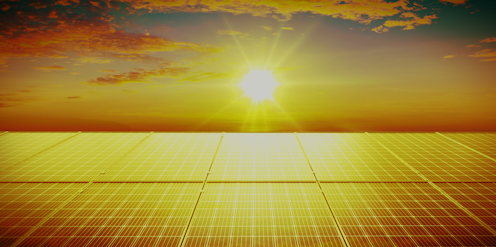When it comes to power, solar is about to leave nuclear and everything else in the shade
- Written by Peter Martin, Visiting Fellow, Crawford School of Public Policy, Australian National University

Opposition leader Peter Dutton might have been hoping for an endorsement from economists for his plan to take Australian nuclear[1].
He shouldn’t expect one from The Economist[2].
The Economist is a British weekly news magazine that has reported on economic thinking and served as a place for economists to exchange views since 1843.
By chance, just three days after Dutton announced plans for seven nuclear reactors he said would usher in a new era of economic prosperity[3] for Australia, The Economist produced a special issue, titled Dawn of the Solar Age[4].







